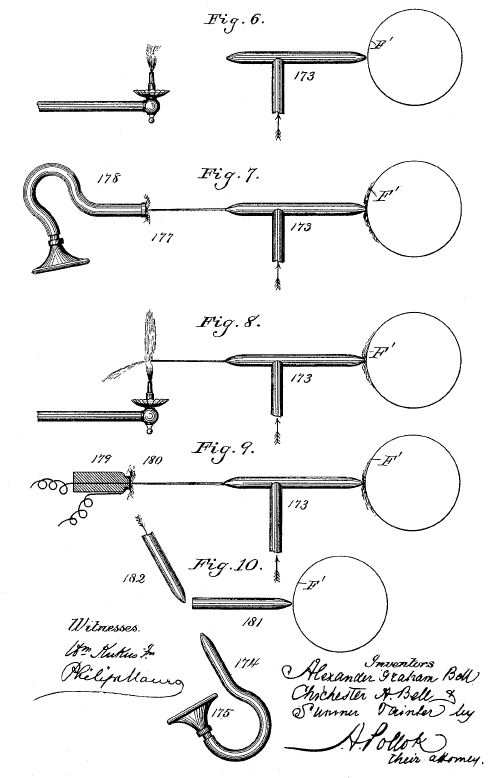Gallery opened 24 July 2018




Hydraulic Phonograph Pickups |
Gallery opened 24 July 2018 |
Chichester Bell, first cousin of Alexander Graham Bell, the telephone pioneer, did a good deal of work on hydraulic microphones. An offshoot of this work was a patent for a bizarre of way of reading information from recorded discs and cylinders, taken out by both Chichester Bell and Alexander Graham Bell, with a Mr Tainter making up a trio. This was US patent 341,212 on May 1886.
The basic notion was to use a jet of gas or liquid to trace hill-and-dale grooves; the patent text suggests either can be used, though their behaviour would surely have been quite different. It seems to me very unlikely that a gas jet could give any useful results; I am far from sure that the liquid version would give any either. The idea was to direct a narrow jet at the groove and detect small pressure variations as the hill-and-dale profile moved past it.
 | Left: The Bell/Bell/Tainter pneumatic and hydraulic phonograph pick-ups: 1886
|

  
|